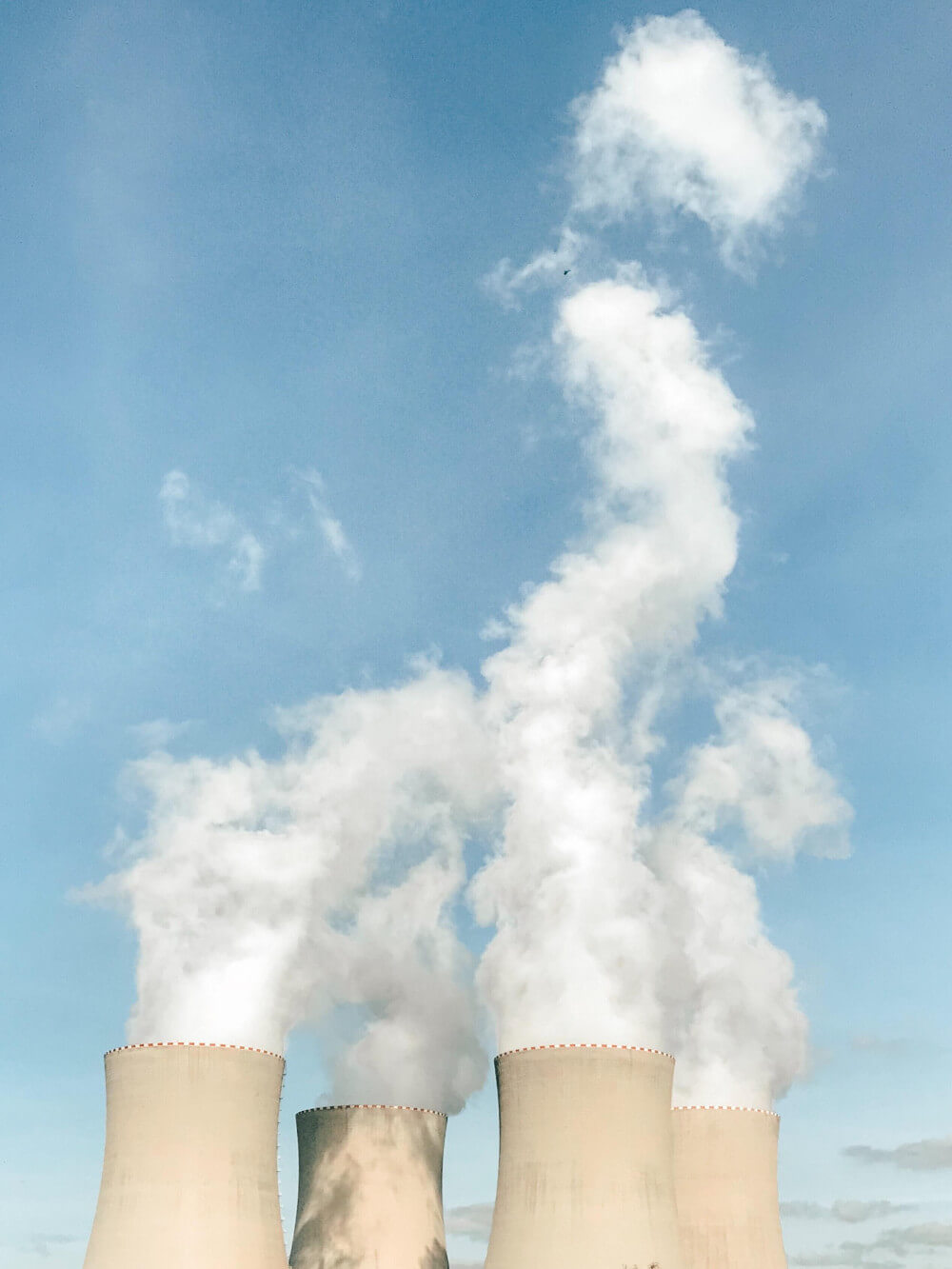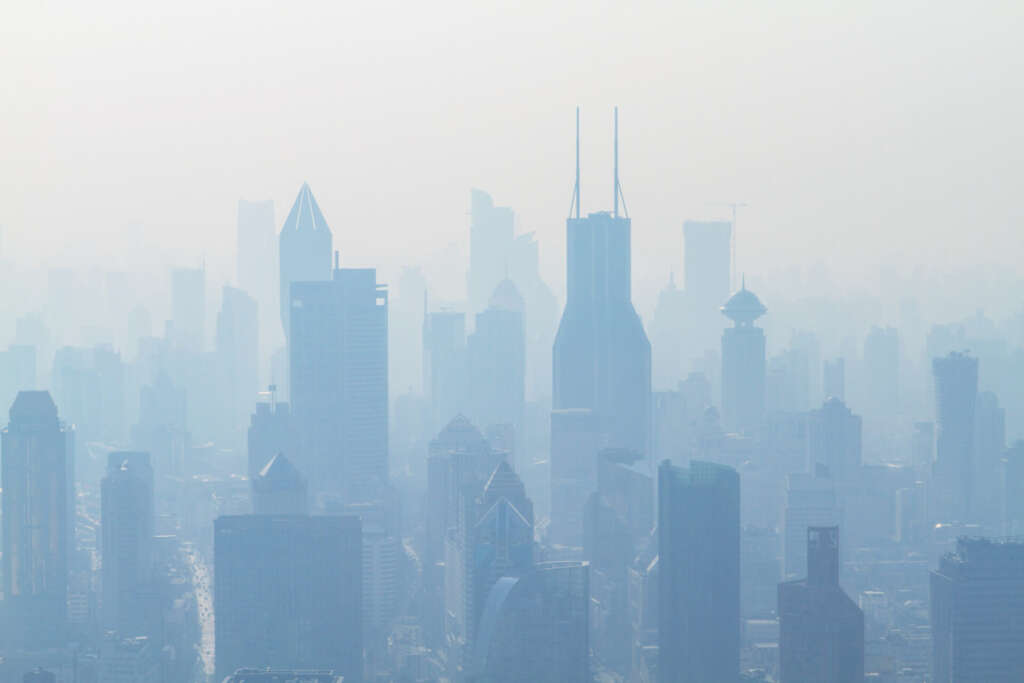What is air pollution?

Particulate matter
The most problematic air pollutant in terms of human health is particulate matter. Particulate matter comes in both large and “fine” sizes.
Large particles (PM10) consists of substances such as dust, asbestos and lead, and can get into the lungs, while fine ones (PM2.5) include organic compounds and metals, and can penetrate deeper into the respiratory system.
The International Agency for Research on Cancer (IARC) concluded in 2013 that particulate matter may be carcinogenic to humans, while the World Health Organization states that it is responsible for a significant reduction of life expectancy.
The interesting thing is that this pollution can be transported in the atmosphere for hundreds or even thousands of kilometres and affect people living far away from its sources.
Sources of air pollution
There are numerous sources of air pollution and most of them are attributed to human activities. They include industries, fossil fuels burning, modern agriculture, and landfills. Whereas most causes of air pollution are entirely anthropogenic, others are naturally-occuring, such as wildfires, dust storms, animal digestion, and volcanic eruptions.
Road dust, wear and tear of brakes and tyres on vehicles, construction activities, sea salt, forest fires, pollen, etc.
Produced during incomplete combustion of any fuel like natural gas, charcoal, gasoline, coal.
Created by chemical reactions between oxides of nitrogen (NOx) and volatile organic compounds (VOCs). Emissions from industrial facilities, motor vehicle exhaust and chemical solvents are some of the major sources of NOx and VOCs.
Motor vehicles and any combustion of fossil fuels.
Combustion of fossil fuels, volcanic eruptions.
Air pollution limits
Both the World Health Organization (WHO) and the European Union (EU) have established some limit concentrations for key air pollutants above which they may pose some health risks to sensitive populations.
| Pollutant | WHO limit | EU limit |
|---|---|---|
| Particulate matter PM10 | 50 µg/m³ 24-hour mean | 20 µg/m³ annual mean | 50 µg/m³ 24-hour mean | 40 µg/m³ annual mean |
| Particulate matter PM2.5 | 25 µg/m³ 24-hour mean | 10 µg/m³ annual mean | 25 µg/m³ annual mean |
| Carbon monoxide (CO) | - | 10 mg/m³ 8-hour mean |
| Ozone (O3) | 100 µg/m³ 8-hour mean | 120 µg/m³ 8-hour mean |
| Nitrogen dioxide (NO2) | 200 µg/m³ 1-hour mean | 40 µg/m³ annual mean | 200 µg/m³ hourly mean | 40 µg/m³ annual mean |
| Sulphur dioxide (SO2) | 500 µg/m³ 10-minute mean | 20 µg/m³ 24-hour mean | 350 µg/m³ hourly mean | 125 µg/m³ 24-hour mean |
Health impacts of air pollution
Around 90% of Europeans living in cities are exposed to levels of air pollution deemed damaging to human healthAir pollution is a major risk to our health as it may in long-term provoke the development or aggravate asthma and other respiratory diseases, heart diseases and lung cancer, cause strokes, and even shorten life span. Especially, particulate matter has been linked with significant health problems.
Even if you are healthy, you may experience temporary symptoms from short-term exposure to particulate pollution, such as irritation of the eyes, nose and throat, coughing, chest tightness and shortness of breath. Exposure to long-term particle pollution may cause irritation of the airways, decreased lung function, aggravated asthma, and development of chronic bronchitis.

What you can do
Reduce pollution
- Leave the car at home and use an alternative such as walking, cycling, carpooling or public transportation.
- Avoid as far as possible accelerating/decelerating when you drive in the city. Drive at 120 km/h in the highway. You’ll use less gas and produce less pollution.
- Keep the car engine in good condition by performing the regular maintenance.
- Avoid wood burning. If you have to burn wood, follow useful precautions to reduce pollution and particulate emissions, e.g. never burn garbage, plastics, treated or painted wood, etc.
- Set your thermostat no higher than 20°C during the day, and turn it down when you’re out or asleep.
- Keep your water heater at 50°C, and use cold water whenever possible.
- Turn off non-essential lights and unplug electronic devices when not in use. Prefer to use energy efficient light bulbs and appliances.
- Avoid garden tools that run on gasoline. Use hand-powered garden tools.
- Keep your furnace, and your heating, humidifying and air conditioning units well maintained.
- Clean dust from the coil at the back side of the refrigerator one-two times yearly.
- Avoid BBQ when air pollution levels are high.
- Buy local products that use less packaging and less energy for transportation.
- Use video conferencing or Skype for business meetings where possible, in order to avoid unnecessary travel.
- Plant trees or create a garden; trees and plants help purify the air.
- Recycle and reuse!
Limit exposure
- Avoid exercising outdoors when air pollution levels are high.
- Always avoid exercising near high-traffic areas.
- Breathe through your nose to filter the largest particles.
- Eat vitamin-rich foods that can help your body to be more resilient to air pollution.
- Regularly check the air quality in your area. Use our platform!
Users should only use them for informational purposes.



